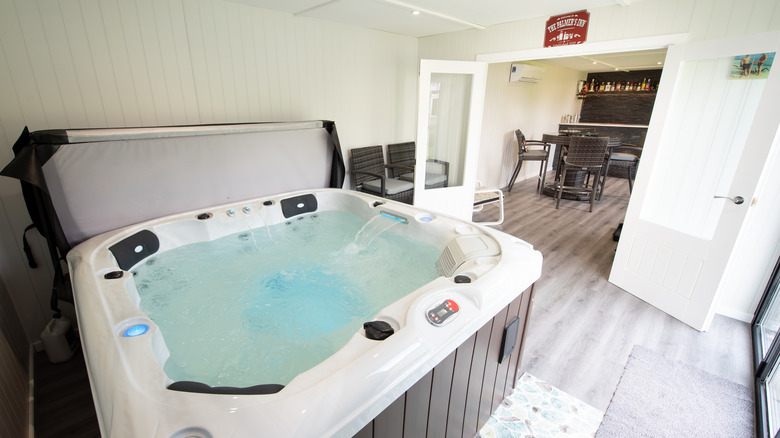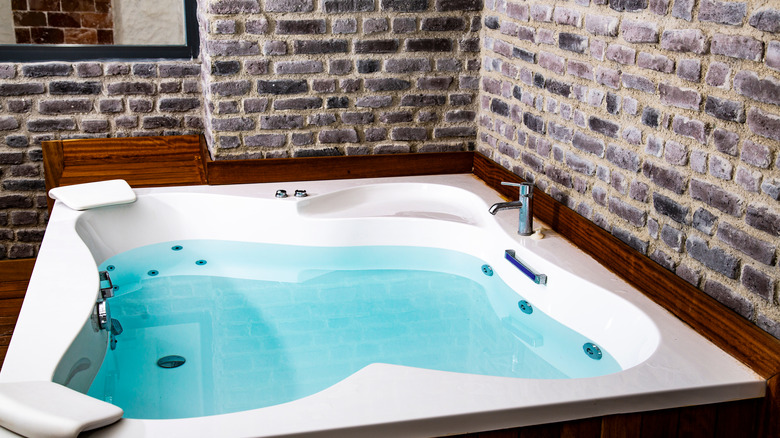The Overlooked Mold And Mildew Risks Of Indoor Hot Tubs
An indoor hot tub can be a luxurious addition to your home, but if you are not aware of the risks, it may lead to far more stress than relaxation. Hot tubs produce a lot of steam, which is part of what makes them so rejuvenating to soak in. However, humidity, heat, and enclosed spaces are breeding grounds for bacteria growth, creating the perfect environment for mold spores and mildew. For this same reason, hot tub covers may develop mold if not cared for properly. Excessive moisture can also cause structural damage to your home, such as joint cracks in drywall.
There are many negative effects of mold and mildew in your home. Mildew causes an unpleasant smell and could damage your furniture, plants, and other materials. Both mold and mildew can cause health problems, such as respiratory issues and headaches. The long-term effects of mold exposure are more severe, and could make allergies worse over time.
It is essential to prepare the space with adequate ventilation and waterproofing before adding an indoor hot tub to your home. One of the most common mistakes everyone makes when buying a hot tub is not having a well-equipped environment to put it in. This is especially important when it comes to indoor hot tubs, as the needs and requirements are more complex. It can be difficult to remove mold and mildew after they have already set in. Instead, you can take adequate measures to prevent them from developing in the first place.
How to prevent mold and water damage from your indoor hot tub
With the right preparation, you can enjoy your indoor hot tub without damaging to your home or putting your health at risk. Firstly, ensure that your jacuzzi is in a well-ventilated area. The room should have windows that open and, as an added precaution, a dehumidifier or an extractor fan that draws moisture out of the room and forces it outdoors, like what you'd find in a bathroom or kitchen. If you choose to install ventilation fans, ensure that they are rust-resistant. If you don't know which option to choose, an HVAC specialist can help you determine the requirements of your space.
Drywall is sensitive to humidity, but one way to combat this is by installing a vapor barrier under the drywall for added protection. However, the best way to protect your home is by installing water-resistant drywall, or by placing the indoor hot tub in a glass or cement enclosure.
Floors are also prone to water damage, which can lead to mold and rot. It's essential to install flooring that can withstand water, such as ceramic tiles, with traction or non-slip protection for added safety. The flooring that you choose should be able to handle and adequately drain large puddles of water. It's easy to overlook how much water splashes onto the floor when climbing in and out of a jacuzzi. These precautions will ensure that your hot tub room is a secure space for relaxation.

